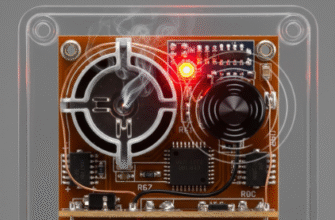Imagine rush hour without them. Picture major intersections dissolving into a tangled mess of metal, frustrated drivers, and blaring horns. It’s a scene of pure chaos, yet one we rarely experience thanks to an invention so commonplace we often overlook its significance: the traffic light. These glowing sentinels stand guard at crossroads around the globe, silently orchestrating the complex dance of urban mobility. They are the unsung heroes of our daily commute, the technological solution to a problem born from our very own desire to move faster and farther.
Before the Lights: Chaos Reigns
Before the advent of automated signals, directing traffic was a purely human endeavor, and often a perilous one. In the bustling streets of 19th-century cities, crammed with horse-drawn carriages, pedestrians, carts, and the occasional daring early automobile, major intersections were notoriously difficult to navigate. The primary method of control involved police officers standing, often precariously, in the middle of the junction, using hand signals, whistles, and sheer force of will to impose some semblance of order. This was exhausting, inefficient, and increasingly dangerous as vehicle speeds and numbers grew. The need for a more systematic, less physically demanding solution was becoming painfully apparent.
A Flicker of an Idea: The London Experiment
The very first attempt at an automated traffic signal wasn’t electric, but rather gas-lit. Installed outside the Houses of Parliament in London in December 1868, it was the brainchild of railway engineer J.P. Knight. Drawing inspiration from railway signalling systems, his invention featured semaphore arms that extended horizontally to signal ‘stop’ and lowered to a 45-degree angle for ‘caution’ during the day. At night, red and green gas lamps were used – red for stop, green for caution. A police officer stationed nearby operated the device manually using levers. While innovative, this early pioneer had a tragically short life.
The world’s first traffic signal was installed in London on December 9, 1868. It was designed by J.P. Knight and used gas lamps for nighttime visibility. Unfortunately, less than a month into operation, a gas leak caused one of the lamps to explode, severely injuring the police operator.
This disastrous end halted further development of gas-lit signals for decades. The idea, however, had been planted. The fundamental concept of using coloured lights to dictate traffic flow was sound, even if the initial technology proved volatile. The streets would have to wait a while longer for a safer, more reliable solution.
The Electric Era Begins: American Innovation
The turn of the 20th century saw the rise of the automobile and the widespread availability of electricity, setting the stage for the next evolution of traffic control. Several inventors contributed to the development of electric traffic signals in the United States.
While historical accounts sometimes vary, early credit often goes to individuals like Lester Farnsworth Wire, a Salt Lake City police officer who is said to have developed a manually operated electric signal with red and green lights around 1912. However, documented patents provide clearer milestones. James Hoge received a patent in 1918 for a system installed in Cleveland, Ohio, in August 1914 by the American Traffic Signal Company. This system, often cited as the first electric traffic signal, featured illuminated “Stop” and “Move” signs on arms, along with red and green lights. It still required manual operation from a booth but marked a significant step forward, using electricity for illumination rather than volatile gas.
These early electric signals typically used only two colours: red for stop and green for go. This binary system, while an improvement over hand signals, lacked a crucial element – a warning period to indicate an impending change. Drivers often faced abrupt transitions, leading to rear-end collisions or frantic dashes to beat the light.
Enter the Amber: The Crucial Third Light
The need for a transition signal became obvious. The introduction of the yellow, or amber, light significantly improved safety and traffic flow. While multiple inventors were likely experimenting with three-light systems, Garrett Morgan, an African American inventor also known for creating an early gas mask, received a patent in 1923 for a T-shaped, three-position signal. His design included an “all stop” phase, intended to clear the intersection before traffic from another direction was allowed to proceed – a concept reflected in the function of the modern yellow light.
The three-colour system – red, yellow, green – rapidly became the standard. Red unequivocally meant stop. Green meant proceed with caution. The yellow light served as a vital warning: the green phase was ending, and drivers should prepare to stop, unless they were too close to the intersection to do so safely. This addition dramatically reduced the abruptness of signal changes and gave drivers crucial reaction time.
The exact hue and meaning have been standardized internationally over time, though minor variations exist. The sequence (Green -> Yellow -> Red -> Green in most places) is also a critical element, providing a predictable pattern for drivers worldwide.
Automation and Coordination: Smarter Streets
Initially, even electric signals required manual operation. Police officers sat in booths, observing traffic and flipping switches. The next major leap was automation. Early automatic signals used simple timers, often electromechanical, to cycle through the red, yellow, and green phases based on predetermined intervals. This freed up police officers for other duties and allowed for more consistent signal timing.
However, isolated, timed signals could still create frustrating stop-and-go traffic along major routes. The real breakthrough came with interconnected and coordinated systems. Engineers realized that by linking signals along a corridor and carefully timing the green phases, they could create a “green wave.” Vehicles travelling at a specific speed could theoretically proceed through multiple intersections without stopping. This required more sophisticated controllers and careful traffic analysis but significantly improved efficiency on arterial roads.
Early coordination used physical cables connecting the signals, but later advancements incorporated master clocks and eventually computerised central control systems, allowing for dynamic adjustments based on time of day or even real-time traffic conditions.
Modern Marvels and Future Directions
Today’s Traffic Tech
Traffic light technology continues to evolve. The incandescent bulbs of yesteryear have largely been replaced by highly efficient, long-lasting, and brighter Light Emitting Diodes (LEDs). LEDs consume far less energy and are much more visible, especially in bright sunlight or adverse weather conditions.
Beyond the lights themselves, the control systems have become incredibly sophisticated. Many modern intersections use sensors to detect the presence of vehicles:
- Induction Loops: Wires embedded in the pavement detect the metal mass of vehicles passing over them.
- Video Cameras: Image processing software analyses video feeds to detect vehicles and even queues.
- Radar/Microwave Sensors: These devices detect moving vehicles approaching the intersection.
This sensor data feeds into adaptive traffic control systems. Instead of fixed timings, these systems can adjust signal phases in real-time based on actual traffic demand, reducing unnecessary waiting times and improving overall flow. Countdown timers, both for vehicles and pedestrians, provide additional information, reducing driver anxiety and improving pedestrian safety.
While modern traffic signals are highly automated, they rely on complex sensors and algorithms. Malfunctions can occur, and drivers should always approach intersections with caution, even when they have a green light. Never assume the way is clear without looking.
Pedestrian Considerations
Signals aren’t just for cars. Pedestrian signals (“Walk”/”Don’t Walk” or symbolic figures) are integral safety features. Many now include tactile push buttons and audible signals (beeps, clicks, or verbal announcements) to assist visually impaired individuals. Leading Pedestrian Intervals (LPIs), where pedestrians get a walk signal a few seconds before vehicles get a green light, further enhance safety at busy crossings.
The Road Ahead
The future likely involves even greater integration. Traffic lights will become key components of “smart cities,” communicating not only with central control systems but potentially directly with connected and autonomous vehicles (CAVs). This Vehicle-to-Infrastructure (V2I) communication could optimize traffic flow on an unprecedented scale, perhaps even making traditional red-yellow-green cycles obsolete in certain scenarios as vehicles seamlessly negotiate intersections based on shared data. Predictive analysis using AI might anticipate traffic build-ups and adjust signal timings proactively.
The Enduring Legacy of the Traffic Light
From a dangerously explosive gas lamp in Victorian London to the sophisticated, sensor-driven LED arrays of today, the traffic light has undergone a remarkable transformation. It stands as a testament to human ingenuity applied to the challenge of managing the movement that defines modern life. It regulates flow, prevents countless accidents, and imposes a necessary order on the potential chaos of our roads. The next time you pause at a red light, take a moment to appreciate this colourful piece of history – the glowing guardian that keeps our cities moving.







